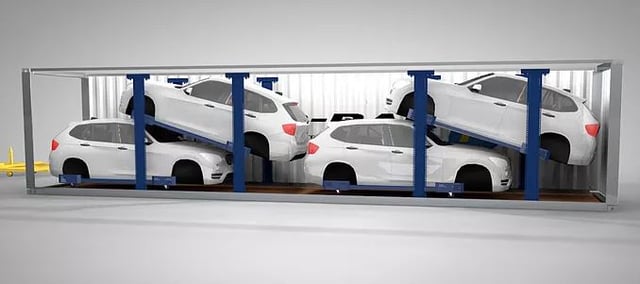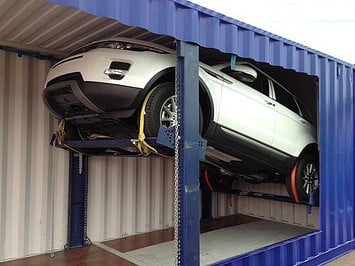
The logistics provider you’re currently using are likely providing your company with plenty of benefits, not the least of which is having a specialist to handle all of the challenges involved with moving your vehicles. Indeed, your logistics providers may be saving your company a lot of time and money. However, are they keeping you as close to your product as you wish to be, and allowing you to have the control you want over the delivery process? There is a way to obtain affordable, full control over the shipping of your vehicles, and that is through containerisation. However, these aren’t the only benefits you’ll realise when you make the decision to transport cars in containers.
There is a way to obtain affordable, full control over the shipping of your vehicles, and that is through containerisation. However, these aren’t the only benefits you’ll realise when you make the decision to transport cars in containers.
1) More Options, More Flexibility
Other methods of transport, like RoRo vessels, have no choice but to follow fixed, often indirect routes. They must also travel slowly, and ports with RoRo terminals may be few and far between. This in turn necessitates more transfers by road or rail to complete your journey. Container ships sail more frequently and tend to have both a wide choice of ports and quicker transit times. Typically, port turnaround times with containers can be as little as 24 hours.
In terms of rail transport, the limited amount of space must be optimised wherever possible in order to reduce costs. Containers maximise space while reducing costs so that rail transport rates can remain competitive.
Choosing containers to transport your vehicles means greater flexibility with what you ship and how much. For example, if you are unable to fill a container with cars, the unused space can be packed with other items. For example, SKD bodies can be shipped easily with additional parts required for assembly.
2) Less Chance Of Theft
No matter what kind of vehicle you are shipping, containers are a very secure choice. A container can only be opened by three individuals; the seller, a customs employee and the buyer. In addition to this, a container’s contents cannot be seen from the outside, and carriers are not aware of what’s in them. These combined security features allow for far more peace of mind compared to other methods.
3) Less Damage
Less chance of damage is another benefit of using containers to ship your cars. All containers must adhere to strict safety regulations in terms of structural integrity. A container fit for shipping is one that’s air and water tight, so as to protect your cars from things like rain, hail, dust, sun, tree sap, bird lime and temperature extremes.
A car being loaded into a container must be carefully positioned before putting wheel chocks in place. After being properly chocked, the wheels are lashed to the container to ensure no movement while in transit, and therefore a very low chance of damage. This is not possible with older methods that make use of wood and string.
4) No Inventory To Store
Containerisation makes it possible to avoid the expensive and resource-wasting practice of storing inventory. Instead, vehicles can be reliably loaded exactly when they need to be before being transported and delivered to the customer on time. As well, when containers with cars are stacked, the cost to store them is far lower than to do so in a multi-storey building. Despite the incredible costs of doing so, manufacturers/3PLs are still building multi-storey car parks for their inventory to wait in. Stacking containers requires virtually no infrastructure or investment.
5) Containers Are Used Everywhere
Containers are not only cost-effective and offer less risk to your cars, but they are a standard transport product, which means they can be loaded, transported and unloaded anywhere in the world.
As you can see, using containers to ship your vehicles has many benefits to your business. Beyond the advantages mentioned above, containerisation also allows you to deliver to more destinations than other methods of shipping.
Find Out More
With markets becoming more globalised the benefits of shorter international transit times are becoming clearer, along with the container’s role in efficiently getting vehicles from source to end user. More information about container shipping can be found in our free eBook; The Containerised Car Transport Guide. This new resource is full of cost saving advice about how to minimise handling and the risk of damage – especially during multi-stage journeys. Get your free copy today by clicking here.














